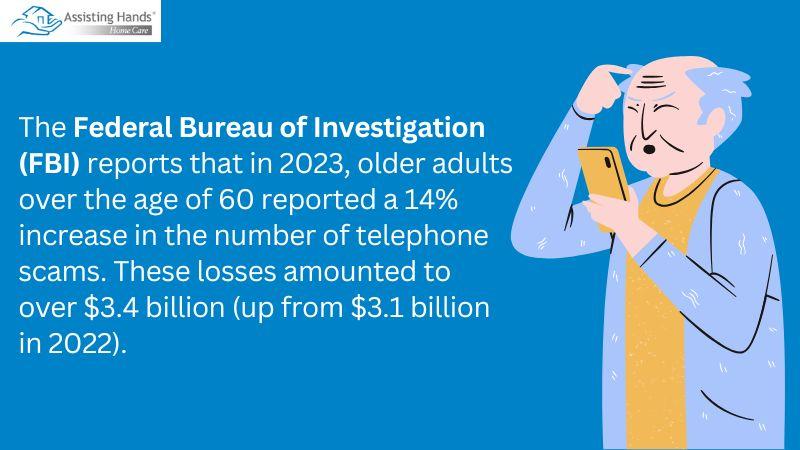FBI Issues Warning on Emerging AI-Powered Text and Voicemail Scams
FBI Highlights Surge in AI-Enhanced Scam Campaigns Targeting Consumers
The Federal Bureau of Investigation has recently raised concerns about a new breed of scams that harness artificial intelligence to craft deceptive text messages and voicemails. These AI-enhanced fraud attempts are engineered to trick individuals into divulging confidential data or transferring funds under false pretenses. As AI technologies become more widespread and accessible, scammers are leveraging them to produce highly believable communications that blur the line between genuine and fraudulent, posing significant risks to both individuals and organizations.
Common red flags to be aware of include:
- Unexpected prompts demanding immediate responses, often involving financial transactions or sensitive personal details.
- Voicemail messages with unnatural, mechanical-sounding voices or overly rehearsed scripts.
- Links or phone numbers directing recipients to dubious websites or unverified call centers.
- Unsolicited outreach from supposed authorities or reputable companies without prior contact.
| Alert Indicator | Example Scenario | Suggested Response |
|---|---|---|
| Immediate payment demand | “Your account will be suspended unless payment is made now.” | Confirm legitimacy through official customer service channels before acting. |
| Unfamiliar robotic voicemail | Automated message requesting a callback to an unknown number. | Refrain from returning the call; report the incident to law enforcement. |
| Suspicious hyperlinks in texts | URLs with misspellings or unusual domain names. | Hover over links to inspect them and avoid clicking; verify with the sender if possible. |
Transforming Fraud: How AI Is Elevating Scam Sophistication and Consumer Vulnerability
Artificial intelligence is revolutionizing the methods scammers use, enabling them to launch more convincing and targeted attacks that evade traditional detection. Modern AI tools can fabricate text messages and voice recordings that closely imitate communications from trusted entities such as banks, government bodies, and well-known corporations. Utilizing technologies like deepfake audio and advanced natural language processing, these scams create a false sense of urgency, compelling victims to disclose private information or engage with malicious links.
Notable AI-driven scam techniques include:
- Automated voice messages that replicate familiar voices with high accuracy.
- Personalized phishing texts crafted using data harvested from social media profiles or data breaches.
- AI-powered chatbots capable of sustaining realistic conversations to build victim trust.
These advancements significantly heighten consumer risk, as conventional warning signs like awkward grammar or generic phrasing are no longer reliable indicators of fraud. The table below outlines recent AI scam characteristics alongside their potential impact and detection challenges:
| AI Scam Characteristic | Potential Consumer Impact | Difficulty in Detection |
|---|---|---|
| Deepfake Audio Messages | Severe – Exploits trust to extract sensitive data | Extremely High |
| Tailored Text Phishing | Moderate – Risk of credential compromise | High |
| Conversational AI Bots | Severe – Facilitates financial deception | Medium |
Recognizing the Hallmarks of AI-Generated Scam Communications
Messages produced by AI often exhibit subtle anomalies that distinguish them from authentic human interactions. Look for unnatural sentence construction or overly formal language that feels out of place. Scammers mass-produce these communications, but the lack of genuine conversational nuance can be a giveaway. Another critical warning is urgent demands paired with threats or unrealistic promises, pressuring recipients to act hastily.
Technical irregularities such as awkward pauses, monotone or synthetic-sounding voicemails, and contextually inappropriate spelling mistakes are also common in AI-generated scams. The following quick-reference table summarizes key signs to watch for:
| Suspicious Trait | Explanation |
|---|---|
| Non-specific Greetings | Generic salutations like “Dear User” instead of personalized names. |
| Unexpected Demands | Requests for confidential information or immediate payments without prior notice. |
| Mechanical Voice Patterns | Voicemails with flat, unnatural intonation or robotic cadence. |
| Conflicting Information | Discrepancies in names, dates, or figures within the message. |
Effective Strategies to Safeguard Against AI-Driven Scams
Maintain a cautious approach when receiving unexpected communications that demand swift action. Given the sophistication of AI-generated voices and texts, distinguishing legitimate contacts from fraudsters can be challenging. Always confirm the authenticity of such messages by reaching out directly to the organization through verified contact details before responding. Avoid clicking on embedded links or downloading attachments from unknown sources, as these may lead to malware infections or phishing sites designed to harvest your data.
Leverage technological defenses to enhance your security posture. Many mobile devices and email platforms now include spam filters and caller ID features that help identify and block suspicious calls and messages. Keeping your software up to date ensures protection against the latest scam techniques. Enabling two-factor authentication on your accounts adds an additional security layer. Educate yourself on the telltale signs of AI scams—such as unnatural speech patterns or dubious URLs—to minimize your vulnerability.
- Never disclose personal or financial information via text or voicemail.
- Verify voicemail authenticity by contacting official numbers independently.
- Install trusted security applications on your devices.
- Report any suspicious communications promptly to relevant authorities.
| Suspicious Behavior | Recommended Precaution |
|---|---|
| Unexpected urgent requests | Confirm through official customer service lines |
| High-pressure voicemail tactics | Avoid calling back unknown numbers directly |
| Texts containing suspicious links | Do not click; run security scans and verify sender |
Final Thoughts: Staying Ahead in the Age of AI-Driven Fraud
As artificial intelligence continues to advance, so do the methods employed by cybercriminals to exploit it. The FBI’s recent advisory underscores the importance of heightened awareness regarding AI-powered scams delivered via text and voicemail. Protecting your personal and financial information requires vigilance, skepticism toward unsolicited communications, and prompt reporting of suspicious activity. By staying informed and cautious, individuals can better navigate the evolving digital threat landscape and reduce the risk of falling victim to these sophisticated fraud schemes.













